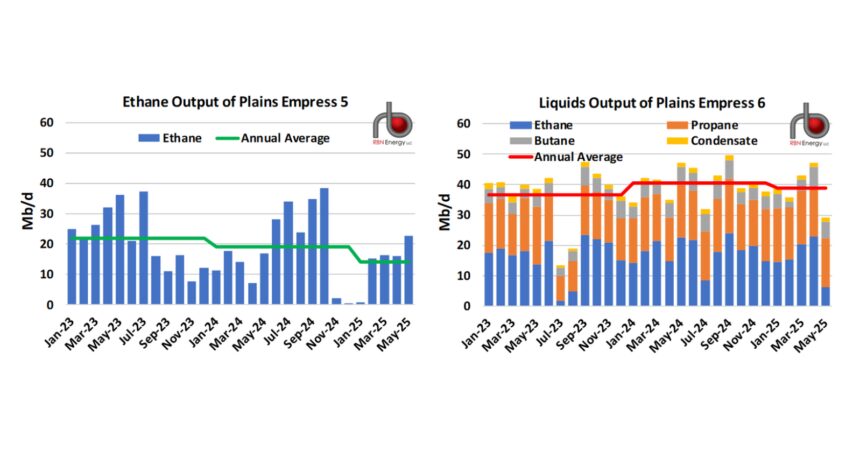I’m sitting in the small community hall in Edson, Alberta, where frost patterns curl up the windows despite the overheated interior. Around me, about 40 residents have gathered, their winter coats draped over chair backs, to hear about the latest corporate transaction that will affect their region. A Keyera Corp representative stands at the front, explaining how their recent acquisition of Plains Midstream Canada will reshape the energy infrastructure landscape that many locals work in or live alongside.
“It means more stability,” whispers Terry, a 58-year-old pipeline maintenance worker who’s spent three decades in the industry. “At least that’s what we’re hoping.”
In a deal worth approximately CAD$1.1 billion, Keyera Corp announced last month its acquisition of Plains Midstream Canada’s natural gas liquids (NGL) business and related infrastructure assets. The transaction marks one of the most significant consolidations in Canada’s midstream energy sector in recent years, expanding Keyera’s footprint across Alberta, Saskatchewan, and into the United States.
What makes this acquisition particularly noteworthy isn’t just its price tag. The deal represents a strategic expansion that gives Keyera control over an integrated network of NGL infrastructure spanning much of Western Canada, including processing facilities, fractionation capacity, storage terminals, and pipeline systems that connect Canadian production to U.S. markets.
“This acquisition aligns perfectly with our long-term strategy,” said Dean Setoguchi, Keyera’s President and CEO, in their announcement. “By combining these complementary assets with our existing infrastructure, we’re creating a more resilient, integrated system that can better serve producers across the Western Canadian Sedimentary Basin.”
For communities like Edson, situated near several processing facilities and pipeline corridors, these corporate maneuvers carry real implications. When I visited Plains’ fractionation facility near Fort Saskatchewan last spring, workers expressed uncertainty about their future as rumors of a potential sale circulated. Now, with Keyera taking over, those same workers are cautiously optimistic about the Canadian company’s reputation for operational excellence and community investment.
The acquisition includes approximately 4,600 kilometers of pipeline infrastructure, 20 million barrels of storage capacity, and key fractionation facilities that separate raw natural gas liquids into component products like propane, butane, and condensate. These components are crucial not only for heating homes and businesses but also for diluting heavy oil production from Alberta’s oil sands.
What energy analysts find most compelling about this transaction is how it strengthens Canadian ownership in the midstream sector. While U.S.-based Plains All American Pipeline will receive a significant cash infusion from the sale, the assets themselves remain under Canadian control, potentially meaning more responsive engagement with local concerns and regulatory priorities.
“We’re seeing a reshuffling of assets toward companies with deep regional expertise and long-term commitment to these communities,” explains Martha Lenihan, energy policy researcher at the University of Calgary. “Keyera knows Alberta’s regulatory environment and stakeholder dynamics intimately, which can make for more effective operations.”
The acquisition also demonstrates confidence in Western Canada’s energy future, despite ongoing volatility in global markets and transitions toward cleaner energy sources. According to data from the Canada Energy Regulator, natural gas production in Western Canada is projected to remain relatively stable through 2030, with natural gas liquids providing essential inputs for petrochemical manufacturing and other industrial processes.
Financial analysts from RBC Capital Markets note that the transaction is expected to be immediately accretive to Keyera’s distributable cash flow, potentially translating to shareholder value and capital for future growth. The company expects to realize approximately $50 million in annual cost synergies by integrating the Plains assets with their existing operations.
For Indigenous communities whose traditional territories intersect with this expanded infrastructure network, the change in corporate ownership raises both concerns and opportunities. When I spoke with Darlene Cardinal, a Métis community liaison who works with several First Nations in northern Alberta, she emphasized the importance of Keyera maintaining and strengthening existing relationships.
“Every time ownership changes hands, we have to start relationship-building again,” Cardinal told me over coffee in Edmonton. “We’re looking for Keyera to honor existing agreements while bringing their own approach to meaningful consultation and economic participation.”
Environmental monitoring will also be a critical consideration as Keyera integrates these assets. The company has pledged to maintain rigorous safety and environmental standards across the expanded network, but advocacy groups like the Pembina Institute will be watching closely for how the consolidation affects emissions reporting and reduction initiatives.
Back in the Edson community hall, as the meeting winds down, conversations shift from corporate strategy to local impacts. A young mother asks about emergency response protocols for the nearby fractionation facility. An elder questions what community investment programs might change. A municipal councillor wonders about property tax implications.
These are the real-world questions that shape how major energy transactions are experienced on the ground. While Bay Street analysts focus on earnings multiples and synergy potential, communities like Edson measure corporate transactions through a different lens – one centered on safety, stability, and sustainability.
As the Canadian midstream sector continues to evolve, Keyera’s expansion represents more than just a corporate milestone. It reflects the ongoing recalibration of an industry navigating energy transition pressures while maintaining essential infrastructure that millions of Canadians rely on daily.
The true success of this acquisition will ultimately be measured not just in quarterly earnings reports, but in how effectively Keyera integrates these assets into its operations while addressing the complex web of community, environmental, and economic considerations that define Canada’s energy landscape.






